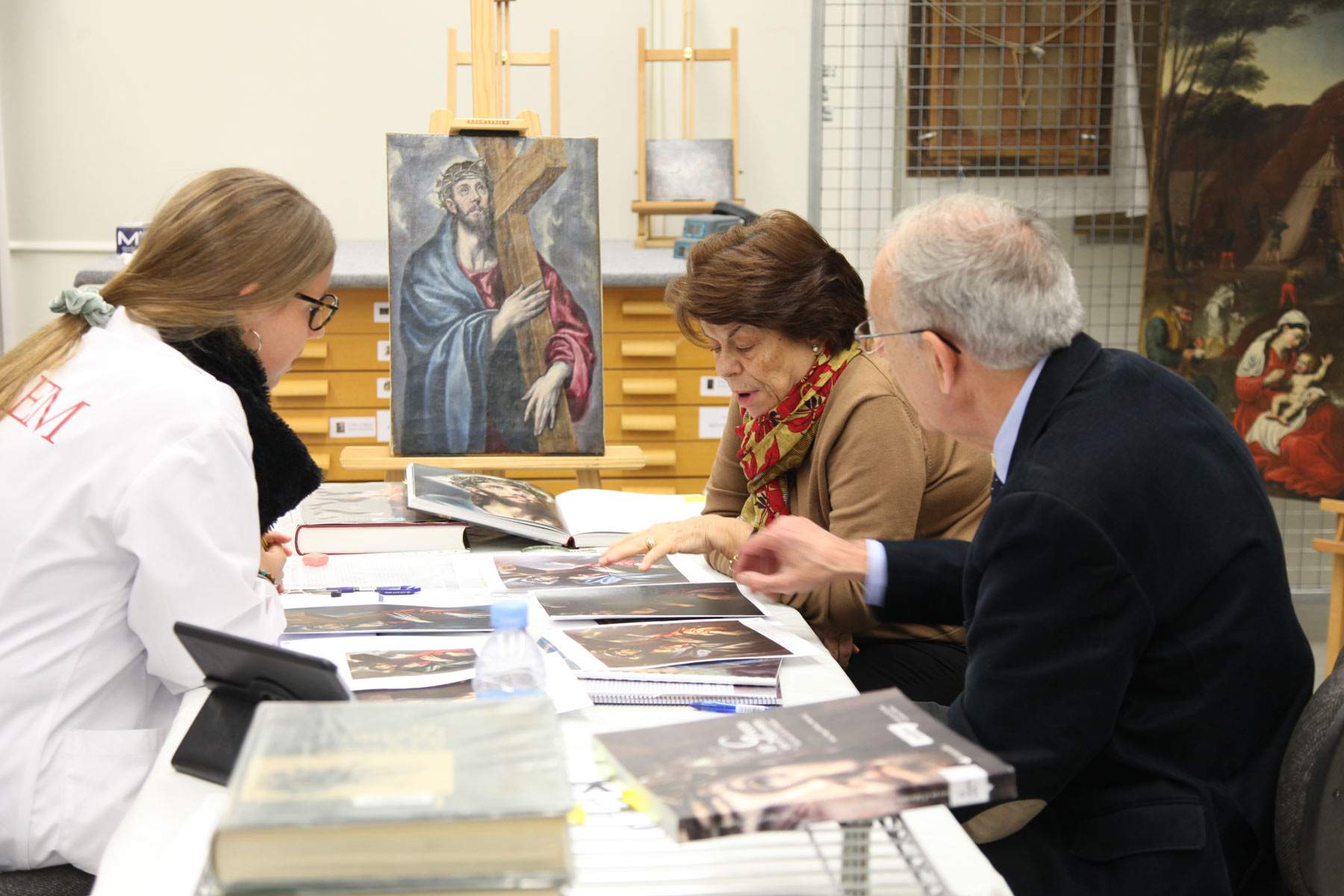A team from the University of Lleida attributes a Christ carrying the cross to El Greco
The Center d’Art d’Època Moderna (CAEM) at theUniversity of Lleida, Spain, has attributed to El Greco (Domínikos Theotokópoulos; Candia, 1541 - Toledo, 1614) a Christ Carrying the Cross kept in a private collection, whose name has not been revealed. The attribution comes after two years of studies conducted by art historian Carmen Garrido Pérez (director emerita of the Prado Museum’s Technical Cabinet, who passed away in December 2020) during which CAEM, with a “careful, meticulous, slow-burning work , the way Carmen Garrido liked to work” (so in a note), subjected the painting to a lengthy analysis that bears the signatures of Garrido, CAEM director Ximo Company i Climent, and CAEM deputy director researcher Mariona Navarro Font.
The privately collected Christ, depicted as half-length, wearing a crown of thorns, and with the elongated proportions typical of El Greco’s painting, virtually identical to those preserved at the Metropolitan Museum in New York and the Prado in Madrid (but there are other replicas), was compared with several known works by the artist housed at the El Greco Museum in Toledo and the Prado in Madrid, and was identified as a work made by the artist’s own hand, and not by his pupils or workshop assistants. “It took two years of passionate work, study and analysis,” Company told El País newspaper.According to the Spanish art historian, the technical characteristics of the painting, as well as the composition of the palette, argue in favor of attributing it to the Cretan painter. “This small canvas,” he says, “has a freshness, delicacy and prodigious quality, and the same goes for its finish. The mighty face of Christ is enormously impactful, quiet, expressive. It is an unseen, unknown El Greco.”
 |
| The cross-bearing Christ studied by CAEM |
And given its extreme similarity to other known works by the artist (including those, mentioned above, from the Metropolitan and Prado), Company suggested that the private collection painting may have been the model for larger, more important compositions. In fact, the forthcoming study (80 pages with 100 images) gives an account of Carmen Garrido’s hypothesis that the Christ Carrying the Cross may also have been one of the works El Greco kept in his atelier to show to his clientele in the late 16th century. “A kind of model,” Company said, “like the ones that the great painters kept in their workshops, as operational bases for other possible similar versions.” However, the art historian continued, “because of the exquisiteness of the finish, and because of its small size, it could also be a work intended for the private chapel of a nobleman or member of the clergy.”
The study also took into account archival documents: in the inventory drawn up by El Greco’s son Jorge Manuel Theotocópuli between April 17 and July 7, 1614, there is mention of a painting registered as Christo con la cruz a cuestas, which, according to the scholars, could be the one being studied. In conclusion, Company says, “if the work studied by CAEM is a model, and if it is the same one mentioned in the 1614 inventory, this model may have inspired all the other known versions of the Christ carrying the cross. Ultimately, it is a great discovery.”
Pictured below: the team that attributed the painting to the Greek. From left: Navarro Font, Garrido Pérez, Company i Climent.
 |
| A team from the University of Lleida attributes a Christ carrying the cross to El Greco |
Warning: the translation into English of the original Italian article was created using automatic tools. We undertake to review all articles, but we do not guarantee the total absence of inaccuracies in the translation due to the program. You can find the original by clicking on the ITA button. If you find any mistake,please contact us.





























